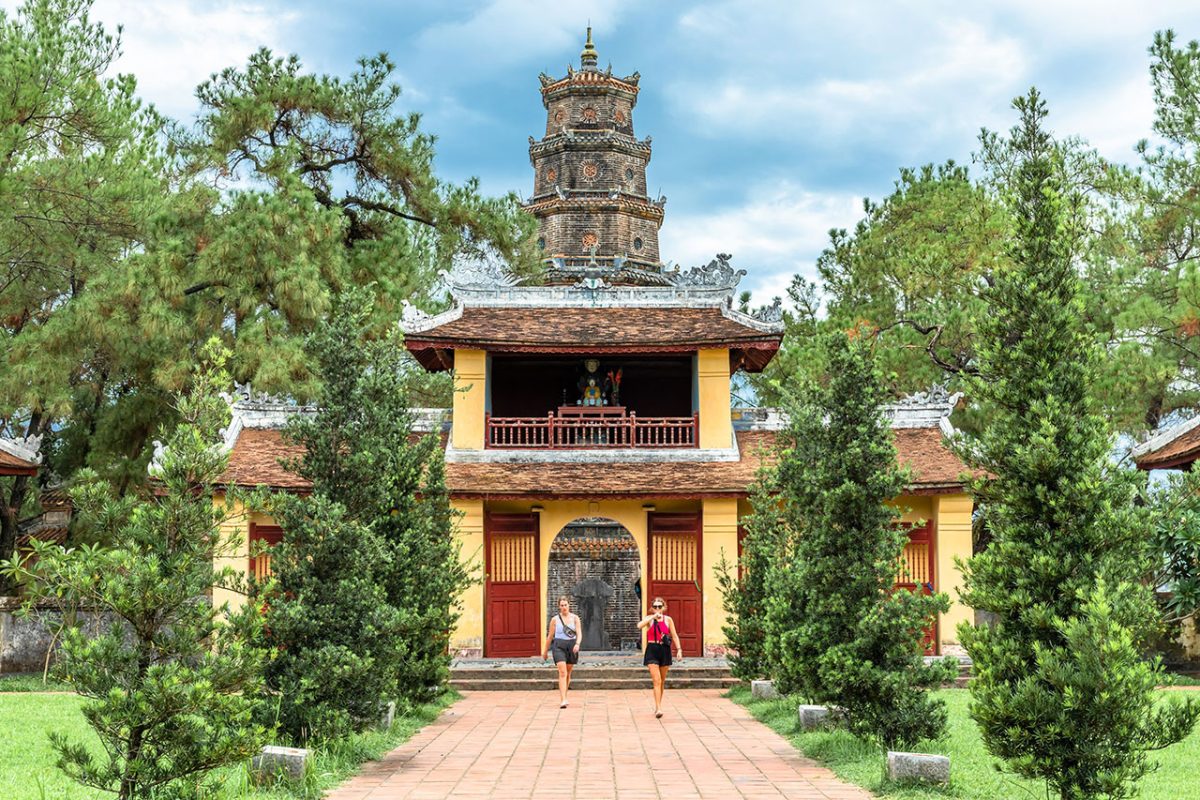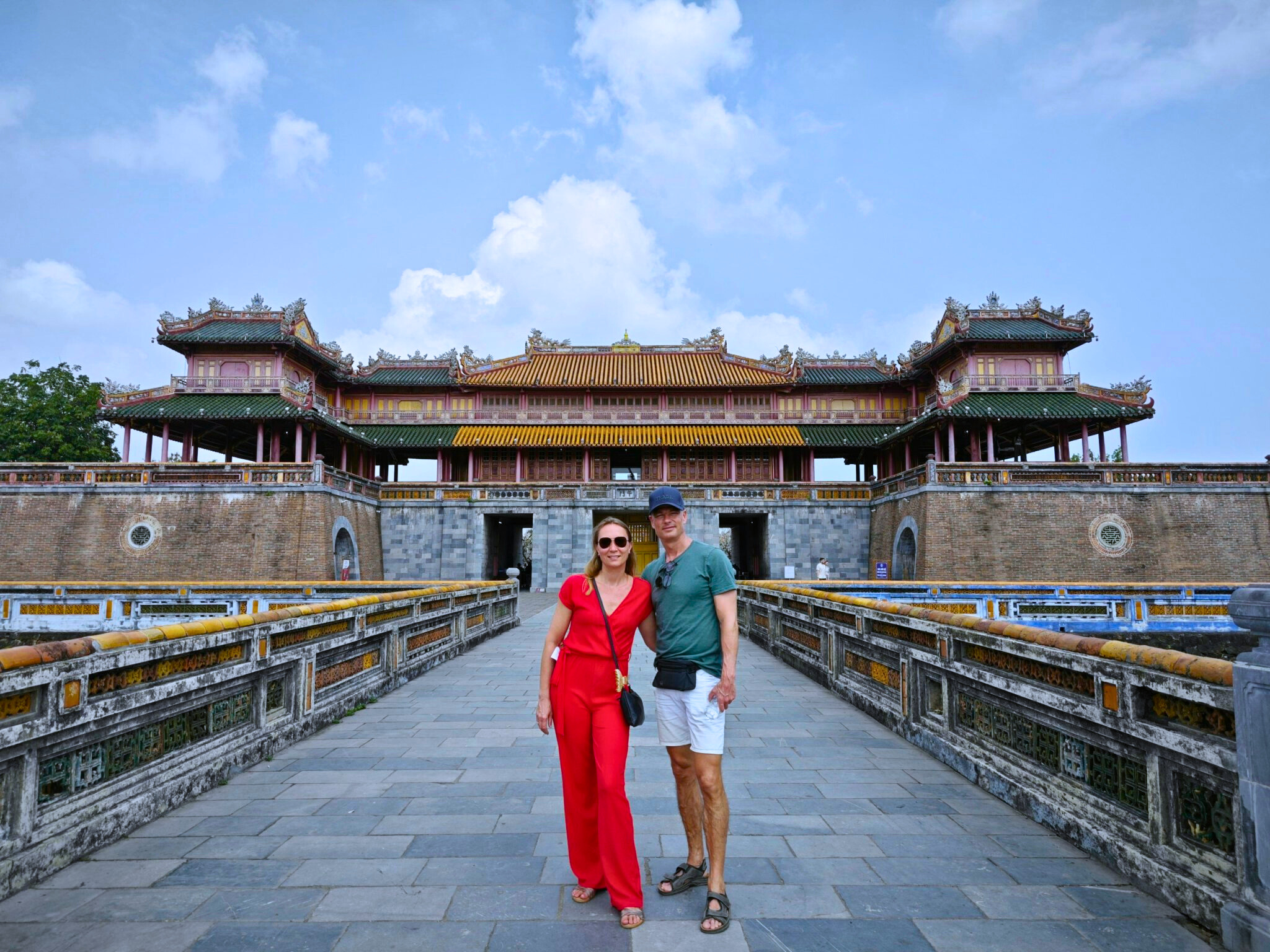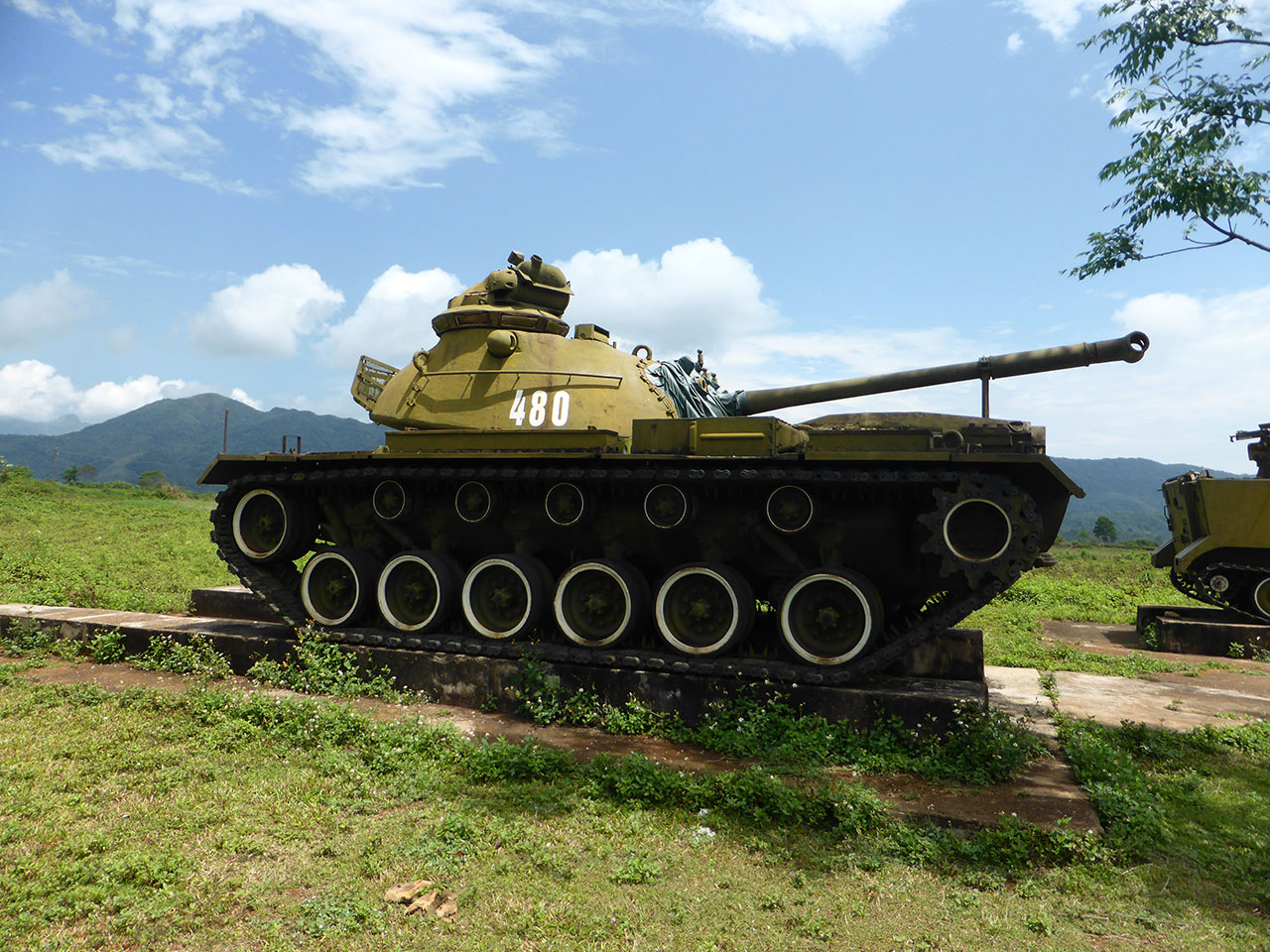Thien Mu Pagoda
Standing majestically on Ha Khe Hill overlooking the Perfume River, Thien Mu Pagoda isn’t just another temple in Vietnam. It’s the spiritual heart of Hue, the ancient imperial capital, and arguably the most photographed religious monument in Central Vietnam. But what makes this 400-year-old pagoda so special that millions of visitors flock here annually?

What Exactly Is Thien Mu Pagoda?
Thien Mu Pagoda (Chùa Thiên Mụ), also known as the Pagoda of the Celestial Lady, is more than just a religious site. Built in 1601 under Lord Nguyen Hoang’s reign, this architectural masterpiece has witnessed centuries of Vietnamese history, from royal ceremonies to revolutionary movements.
“Thien Mu isn’t just a pagoda; it’s a living museum where every stone tells a story of Vietnam’s spiritual and political journey.” – Dr. Nguyen Van Hue, Vietnamese Cultural Heritage Expert
The Fascinating Legend Behind Thien Mu Pagoda
Why build a pagoda on this specific hill? The answer lies in a captivating legend that locals still share today. According to ancient folklore, an elderly woman appeared on the hill wearing a red shirt and blue trousers. She proclaimed that a lord would come to build a pagoda for the country’s prosperity. Then, she vanished mysteriously into the clouds.
Lord Nguyen Hoang, upon hearing this prophecy, ordered the construction of the pagoda, naming it “Thien Mu” – meaning “Celestial Lady” in honor of the mysterious woman.
Architectural Marvel: Breaking Down the Seven-Story Tower
The Phuoc Duyen Tower, Thien Mu’s most recognizable feature, stands 21 meters tall with seven octagonal stories. But here’s what most visitors don’t know:
- Each level represents a different Buddha incarnation – a unique architectural concept in Vietnamese Buddhism
- The octagonal shape symbolizes the eight-fold path of Buddhism
- Original construction used no nails – traditional Vietnamese carpentry at its finest
- The tower faces east – welcoming the first rays of dawn, symbolizing enlightenment
Must-See Highlights Inside Thien Mu Pagoda Complex
1. The Dai Hung Shrine
The main sanctuary houses three magnificent Buddha statues, including the impressive Maitreya Buddha (Buddha of the Future). The intricate wood carvings here date back to the 18th century and showcase exceptional Hue craftsmanship.
2. The Famous Austin Car
Perhaps one of the most unexpected exhibits is the blue Austin sedan that carried monk Thich Quang Duc to Saigon in 1963. This vehicle became a symbol of Buddhist resistance during a turbulent period in Vietnamese history.
3. The Giant Bell (Dai Hong Chung)
Cast in 1710 under Lord Nguyen Phuc Chu, this 3,285-kilogram bronze bell can be heard up to 10 kilometers away. Local legend says its sound brings peace to troubled souls.
4. The Tranquil Gardens
The pagoda grounds feature meticulously maintained gardens with:
- Ancient pine trees – some over 100 years old
- Bonsai collections – representing the Buddhist principle of patience
- Lotus ponds – symbolizing purity rising from mud
Best Time to Visit: Insider Tips for the Perfect Experience
| Time Period | Pros | Cons | Recommendation |
|---|---|---|---|
| Early Morning (5:30-7:00 AM) | Peaceful atmosphere, monks chanting, golden sunlight | Limited transportation options | ⭐⭐⭐⭐⭐ Best choice |
| Mid-Morning (8:00-11:00 AM) | Good lighting for photos, comfortable temperature | Tour groups arriving | ⭐⭐⭐⭐ |
| Afternoon (2:00-5:00 PM) | Fewer crowds, dramatic shadows | Hot weather, harsh lighting | ⭐⭐⭐ |
| Buddhist Holidays | Special ceremonies, cultural immersion | Very crowded | ⭐⭐⭐⭐ For culture enthusiasts |
How to Get to Thien Mu Pagoda: Complete Transportation Guide
Option 1: Dragon Boat Cruise (Most Scenic)
The traditional dragon boat ride along the Perfume River offers the most memorable approach. Boats depart from Toa Kham Wharf near Hue Imperial City every 30 minutes. The 30-minute journey costs approximately 150,000 VND per person and includes stops at other attractions.
Option 2: Motorbike or Bicycle (Most Flexible)
Rent a motorbike (100,000-150,000 VND/day) or bicycle (30,000-50,000 VND/day) for the scenic 4km ride from central Hue. Follow Kim Long Street along the river – you can’t miss the tower!
Option 3: Taxi or Grab (Most Convenient)
A one-way taxi ride costs 50,000-70,000 VND from central Hue. Pro tip: Negotiate a round-trip fare with waiting time for better value.
Cultural Etiquette: Do’s and Don’ts
Respecting local customs ensures a meaningful visit. Here’s what you need to know:
DO:
- Dress modestly – cover shoulders and knees
- Remove shoes before entering shrine areas
- Ask permission before photographing monks
- Maintain silence in prayer areas
- Walk clockwise around religious monuments
DON’T:
- Point feet toward Buddha statues
- Touch religious artifacts without permission
- Raise your voice in the complex
- Wear revealing clothing – sarongs are available at entrance if needed
Photography Guide: Capturing Thien Mu’s Beauty
Want Instagram-worthy shots? Professional photographers recommend these spots:
- From the Perfume River banks – Capture the tower’s reflection during golden hour
- The main entrance stairs – Frame the tower through the ornate gateway
- Inside the bell pavilion – Dramatic shadows and architectural details
- The gardens’ stone pathways – Leading lines toward the tower
- The triple gate (Tam Quan) – Traditional architecture at its finest
Combining Your Visit: Nearby Attractions
Maximize your Hue experience by visiting these nearby sites:
- Tomb of Minh Mang (8km) – Stunning royal mausoleum with perfect symmetry
- Hon Chen Temple (4km) – Sacred site for the goddess Po Nagar
- Tomb of Tu Duc (7km) – Poetic emperor’s final resting place
- Vong Canh Hill (5km) – Panoramic views of the Perfume River
Special Events and Festivals
Time your visit during these celebrations for an unforgettable experience:
- Buddha’s Birthday (Vesak) – Usually in May, featuring lantern ceremonies
- Hue Festival – Biennial cultural event with performances at the pagoda
- Tet Nguyen Dan – Vietnamese New Year brings special prayers and offerings
- Mid-Autumn Festival – Lion dances and lantern displays
Practical Information for Visitors
Opening Hours and Admission
- Open daily: 7:00 AM – 5:00 PM (summer), 7:30 AM – 4:30 PM (winter)
- Admission: FREE (donations welcome)
- Guided tours: Available in English and French (100,000 VND)
Facilities Available
- Clean restrooms near the parking area
- Small souvenir shops selling Buddhist artifacts
- Drinking water fountains (bring a reusable bottle)
- Shaded rest areas with benches
Historical Significance: More Than Just a Pretty Pagoda
Thien Mu Pagoda has played a pivotal role in Vietnamese history. During the Tay Son Rebellion (1771-1802), it served as a strategic stronghold. In the 1960s, it became a center of Buddhist opposition to the South Vietnamese government, culminating in the self-immolation of Thich Quang Duc – an image that shocked the world.
Today, the pagoda stands as a symbol of resilience and spiritual strength, having survived wars, natural disasters, and political upheavals while maintaining its sacred purpose.
Conservation Efforts and Future Plans
Recent restoration projects funded by UNESCO and the Vietnamese government have:
- Strengthened the tower’s foundation against flooding
- Restored original wooden structures using traditional techniques
- Improved visitor facilities while maintaining authenticity
- Created digital archives of historical documents
Final Thoughts: Why Thien Mu Pagoda Deserves Your Time
In a country filled with thousands of pagodas, Thien Mu stands apart. It’s not just the architectural beauty or the historical significance – it’s the living, breathing spirituality that continues to draw both pilgrims and tourists. Whether you’re seeking Instagram-perfect photos, cultural insights, or a moment of zen, this iconic pagoda delivers on all fronts.
As you plan your Central Vietnam itinerary, make sure to allocate at least 2-3 hours for Thien Mu Pagoda. Come early for the serenity, stay for the stories, and leave with memories that will last a lifetime. After all, some places are more than tourist attractions – they’re portals to understanding a nation’s soul.
Have you visited Thien Mu Pagoda? Share your experience in the comments below, or check out our comprehensive Hue tour packages that include this magnificent site along with other imperial treasures.




